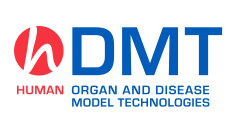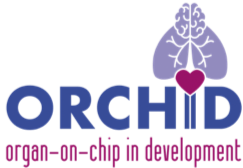Organ-on-Chip
A revolution in healthcare?
A great shift in therapies availability will soon happen thanks to organs-on-chip, new devices containing living engineered tissues, in a controlled and sterile micro-environment. Indeed, they are able to simulate the activities, mechanics and physiological response of entire organs and organ systems.
Re-creating the functional structure of tissues and organ
Organs-on-chip are composed of one or more biocompatible microfluidic chambers containing 3-dimensional cell cultures. They interact much as they might do in real organs and allow to manipulate both chemical and physical conditions in the environment. They allow the implementation of molecular and functional monitoring as well as real-time microscopic imaging. Computational models can then analyse the immense quantity of data produced. The innovative approach is currently to incorporate human stem cells, adult or pluripotent, derived from healthy individuals or patients with genetic disease into these chips using microfluidics, microelectronics and microfabrication. It allows to study the physiopathology of various diseases in the genomic context of each patient for personalised medicine, predict drugs safety and efficacy, etc.
A new model to study diseases, to develop drugs, and more?
The limited availability of human model systems for preclinical
Expensive drug failures in late clinical trials. Drug side effects are still the 4th leading cause of death.
The limitations of the current transplantation procedures: donor/receiver system and transplant rejection
A reliable model to study human physiology and physiopathology
Organ-on-chip are implementing 3D and reproducing cell interactions, physical stimulation and organ interconnections. They can also be tailored to the individual patient, by seeding his cells in a chip.
A reliable model for pre-clinical trials
It allows to focus far earlier on the most promising drug candidates, by reproducing normal vs. pathological conditions in a human miniaturised organ system. This will make drug development better, safer, faster and cheaper.
In the future: transplant of organ-on-chips in humans?
Still under development, it would be an incredible shift in therapy as it could replace the current donor/receiver transplantation system by growing the transplant with the patient’s stem cells.
Organ-on-chip applications
The “organ-on-chip” revolution in biological models for the development of new medicines is happening in Europe
Research institutes like hDMT[1] gather many different technologies and expertise, necessary to the development and utilisation of chips: immunology, cellular biology, physiology, microfluidics, membrane design, biomaterials, sensors, manufacturing and computational sciences. Meanwhile, the H2020 European Research Program funds the ORCHID project (Organ-on-Chip development) which creates a roadmap for organ-on-chip technology and to build a European network with all relevant stakeholders[2].
The emergence of organs-on-chip is an elegant illustration of the necessity to remove the borders between technologies and to work in multi-expertise environments to improve tomorrow’s healthcare and, consequently, the lives of everyone.


